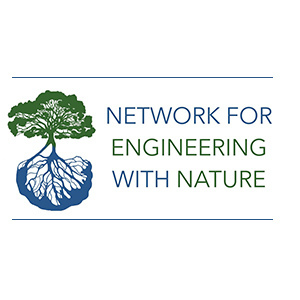Working with Tribal Nations on Nature-Based Solutions

Our goal This N-EWN project is a collaboration between the U.S. Army Corps of Engineers (USACE) Tribal Nations Technical Center of Expertise (TNTCX), the USACE Network for Engineering with Nature (N-EWN), and the University of Georgia (UGA). The project proponents are seeking collaboration with interested Tribal communities in the development of methodologies for the co-production […]
Using Educational Activities to Break Down Barriers to Adoption of Natural Infrastructure

Education is both a goal in itself and a means for attaining the other goals of the N-EWN. Thenetwork is well-positioned to accelerate and expand EWN implementation by influencing currentpractice through education as well as shape a new generation of EWN problem-solvers. Objective This project uses multiple outlets and programs to train students and professionals […]
Best Practices for Scaling Up Nature-based Solutions

Maximizing the benefits and efficiencies of natural infrastructure requires implementing projects at the system or landscape scale, such as across entire watersheds. To help managers plan and implement nature-based solutions on such large scales requires a better understanding of the legal, jurisdictional, regulatory, institutional, and infrastructure factors at play. Objective We aim to identify opportunities […]
Analyzing Natural Feature Performance During Disasters

Significant hurricanes such as Katrina in 2005 and Harvey in 2016 revealed importantdisparities in how communities recover from extreme events. Although naturalinfrastructures may provide as much protection as conventional infrastructure, methodsfor objectively assessing the performance of natural features under hurricane conditionsare not well established. Objective We aim to document current practices for disaster monitoring and […]
Developing and Implementing a Holistic Framework for Monitoring Natural Infrastructure Projects

Large infrastructure projects represent important investments. To ensure that they function as intended throughout their lifespan, they often include monitoring programs. Innovative nature-based solutions have the potential to efficiently provide multiple services for societal benefits at lower cost than conventional infrastructure. However, we are still learning how to design projects to maximize these benefits and […]
Maximizing Benefits by Selecting the Best Scale for Natural Infrastructure Implementation

Natural infrastructure is thought to provide “win-win” outcomes for both ecosystems and communities by providing habitat for key species, recreation opportunities to community members, and protection from severe weather events, among other benefits. However, it is difficult to quantify these benefits from engineering and ecological performance perspectives at larger scales — such as those for […]
Characterizing US Army Corps of Engineers Natural Infrastructure Projects

When choosing between different projects, the US Army Corps of Engineers (USACE) is required to assess multiple alternative plans and select the alternative that maximizes net benefits. In many cases, by law, one of those alternatives assessed must be a project that incorporates natural infrastructure (NI). However, comparing the net benefits of traditional engineering plans […]
Natural Infrastructure Project Evaluation Processes: Past, Present and Future Evaluation Metrics

Objective/Background This project will describe the evaluation methods for the benefits of natural infrastructure projects conducted by the US Army Corps of Engineers® (USACE), and will discuss how those methods may evolve through time. It will also assess the processes used by other public and private entities who develop natural infrastructure projects in the United […]
Optimal EWN solutions for wetland remediation: a FUNWAVE-based numerical framework

Testing EWN® alternatives is difficult because of the large range of spatio-temporal scales involved. Theproject will develop a high-resolution, multiscale numerical simulation platform based on the FUNWAVETVD model for investigating the effectiveness of wetland EWN® solutions. The platform will incorporate all relevant wetland physics, and will be applicable to a wide range of USACE wetland […]
Investigation of Ecological Drivers of Dune Stability to Inform Restoration Design and Management Guidance

Coastal dune vegetation is known to modify dune ecosystem response to wind, waves, and storms, but little focus has been given to understanding how vegetation, specifically belowground structures can enhance dune stability. Further, coastal dune plant communities can be diverse and may have similarly diverse restoration histories. However, little is known about how different species […]

